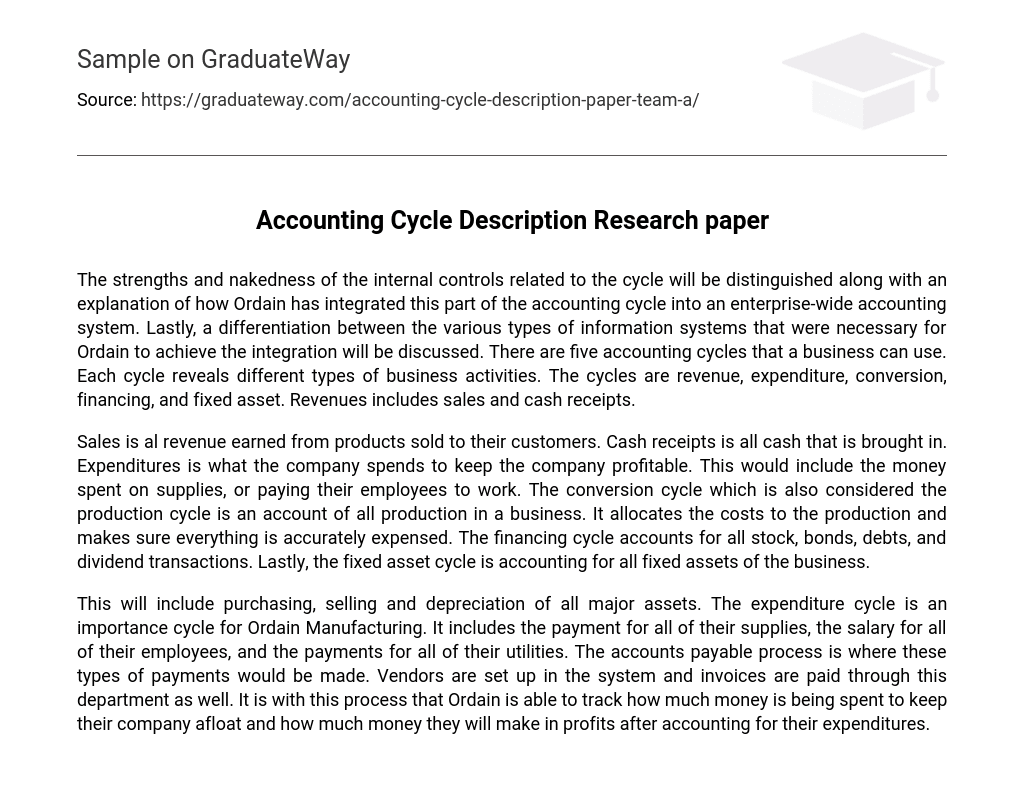The strengths and nakedness of the internal controls related to the cycle will be distinguished along with an explanation of how Ordain has integrated this part of the accounting cycle into an enterprise-wide accounting system. Lastly, a differentiation between the various types of information systems that were necessary for Ordain to achieve the integration will be discussed. There are five accounting cycles that a business can use. Each cycle reveals different types of business activities. The cycles are revenue, expenditure, conversion, financing, and fixed asset. Revenues includes sales and cash receipts.
Sales is al revenue earned from products sold to their customers. Cash receipts is all cash that is brought in. Expenditures is what the company spends to keep the company profitable. This would include the money spent on supplies, or paying their employees to work. The conversion cycle which is also considered the production cycle is an account of all production in a business. It allocates the costs to the production and makes sure everything is accurately expensed. The financing cycle accounts for all stock, bonds, debts, and dividend transactions. Lastly, the fixed asset cycle is accounting for all fixed assets of the business.
This will include purchasing, selling and depreciation of all major assets. The expenditure cycle is an importance cycle for Ordain Manufacturing. It includes the payment for all of their supplies, the salary for all of their employees, and the payments for all of their utilities. The accounts payable process is where these types of payments would be made. Vendors are set up in the system and invoices are paid through this department as well. It is with this process that Ordain is able to track how much money is being spent to keep their company afloat and how much money they will make in profits after accounting for their expenditures.





